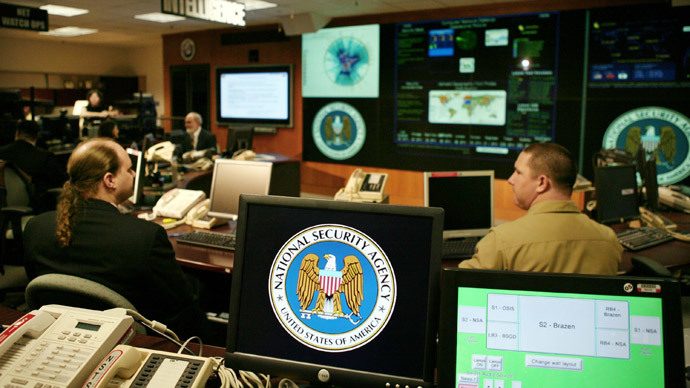NSA's 'Google for Voice' tech can transcribe any phone call -Snowden docs

Documents from the trove of Edward Snowden, the former NSA contractor, shine a light on the US government’s use of sophisticated computer programs to monitor, record, transcribe and analyze all sorts of speech.
The NSA has for over a decade routinely increased the
capabilities of speech recognition software, according to a
report published this week in The Intercept, and for years has relied on
systems alleged to give investigators the ability to scan
millions of recorded conversations and query keywords for
specific content, including even those in languages unfamiliar to
analysts.
Snowden documents show that programs used by the NSA
“automatically recognize the content within phone calls by
creating rough transcripts and phonetic representations that can
be easily searched and stored,” the Intercept reported Tuesday.
Intelligence analysts with the NSA began using a program
code-named RHINEHART in 2004, according to the documents, which
was “designed to support both real-time searches, in which
incoming data is automatically searched by a designated set of
dictionaries and retrospective searches, in which analysts can
repeatedly search over months of past traffic.”
Lots of new Snowden docs with my latest story: http://t.co/eCGZEd6oEBpic.twitter.com/Wqi343xOyh
— Dan Froomkin (@froomkin) May 5, 2015
Two years later, The Intercept reported, a new system
“designed to index and tag 1 million cuts per day” had
already been rolled out in Iraq, with advances regularly
occurring in the span since. That August, an internal memo
published by The Interecept shows that the NSA was already
touting the capabilities of its own sophisticated “Google for
Voice” to prioritize signal interception in real time.
By 2008, documents provided by Snowden show that the NSA had
implemented a program called Enhanced Video Text and Audio
Processing, or EViTAP, which provided a
“fully-automated” service to analysts. The agency was
using it at the time to keep track in real-time of news
broadcasts happening in Arabic, Mandarin Chinese, Russian,
Spanish, English and Farsi/Persian, transcribing those dispatches
on the fly and exporting it in the form of English language text.
Coupled with the telephone surveillance conducted by the NSA, the
tool has reportedly been useful with regards gathering and
analyzing intelligence which might have otherwise been hard to
spot because of language barriers.
At the NSA, the computers are listening: http://t.co/eCGZEd6oEBpic.twitter.com/xU3EVRjZjP
— Dan Froomkin (@froomkin) May 5, 2015
One document published by The Intercept, dated May 2011 and
written by an intelligence analysis technical director for the
agency’s Texas office, claims Human Language Technology, or HLT,
has been used local to find tunnels in Tijuana, spot bomb threats
in Mexico City and provide details about the shooting of US
Customs officials south of the border. The analyst adds he
“had a rare life-changing” moment when he realized the
full potential of HLT programs.
The Intercept reports that the technology has been deployed in
target countries including Iraq and Afghanistan, but the full
scope of the NSA’s efforts is far from realized yet.
“Once you have this capability, then the question is: How
will it be deployed? Can you temporarily cache all American phone
calls, transcribe all the phone calls, and do text searching of
the content of the calls?” said Jennifer Granick, a civil
liberties director at the Stanford Center for Internet and
Society. “It may not be what they are doing right now, but
they’ll be able to do it.”
“We don’t have any idea how many innocent people are being affected, or how many of those innocent people are also Americans,” Granick said.
Vanee’ Vines, an NSA spokesperson, told The Intercept that the
agency “employs a variety of technologies in the course of
its authorized foreign-intelligence mission” as part of its
efforts to “help to deter threats from international
terrorists, human traffickers, cyber criminals, and others who
seek to harm our citizens and allies.” However, Vines
refused to say whether any privacy protections are in place to
prevent the conversations of Americans from being scooped up
through telephone surveillance.












